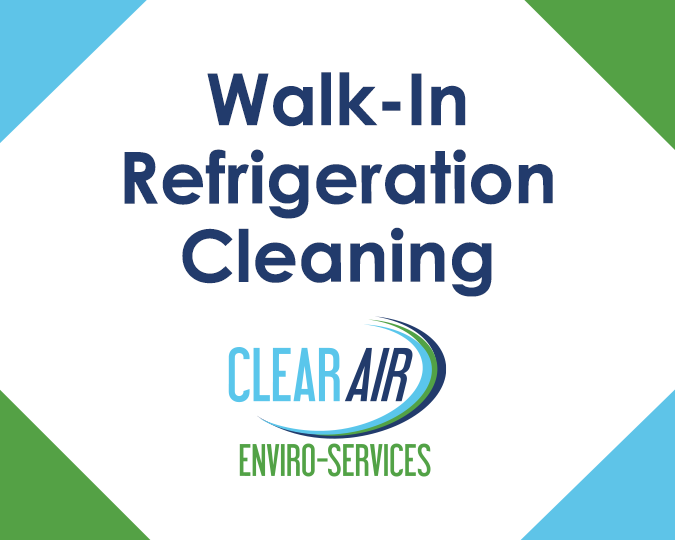Walk-in refrigeration units are an important investment for many companies and cleaning them on a regular basis can help extend their life. Through cleaning the unit consistently, the efficiency is maintained for a longer period of time. Cleaning also prevents mold growth and mildew build up, keeping smells from developing and the contents of the unit from spoiling. With all the benefits to keeping refrigeration units clean, it leaves the questions of How often should they be cleaned and What should be used to clean them?
How Frequently Should A Walk-In Be Cleaned?
Walk-in refrigeration units should be cleaned according to their usage and the industry they are used in. If units are used in a facility where there are a lot of particulate producing materials, it is best to clean more frequently. As a general rule, the drain lines, evaporator, and condensing coils should be cleaned at least twice per year. The walls, floor, ceiling, and the door, including the hinges and gaskets, should be cleaned on a monthly basis. Cleaning the gaskets on the door helps to ensure the door is able to close properly and create a tight seal, keeping the cool air inside of the unit.
What Should Be Used to Clean A Walk-In?
If cleaned regularly, mild soap and hot water with a soft brush or microfiber cloth should be all that is needed to clean refrigeration unit surfaces. Isopropyl alcohol may be added to prolong freezing of your solution, adding one cup per gallon of water. When cleaning the inside of the unit, change the solution as it cools to keep it from freezing to the surfaces. If there is buildup or hard to clean stains, vinegar and water or highly diluted bleach and water can be used, but try to avoid these or other harsh solutions when possible to prevent damage to the surfaces in the unit.
The evaporator and condensing coils should be vacuumed and then wiped down with hot soapy water. If there is build up, a stiff brush can be used. For drain lines, it is best to have a certified professional come in to inspect and clean your lines.
Additional Tips
- Keep up with daily cleaning, addressing spills and messes as they happen.
- Inspect door hinges and gaskets for damage regularly.
- Check the temperature daily to quickly catch any issues with the unit.
- Examine the evaporator and condensing coils for damage while cleaning.
- Remove spoiled items regularly to limit spread of mold spores.
As always, Clear Air Enviro-Services is here to help with any questions or concerns.






